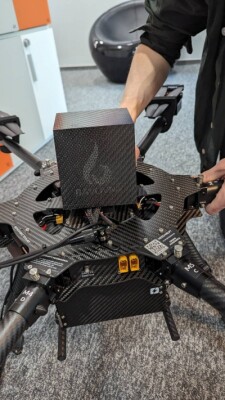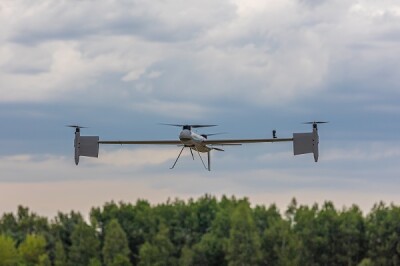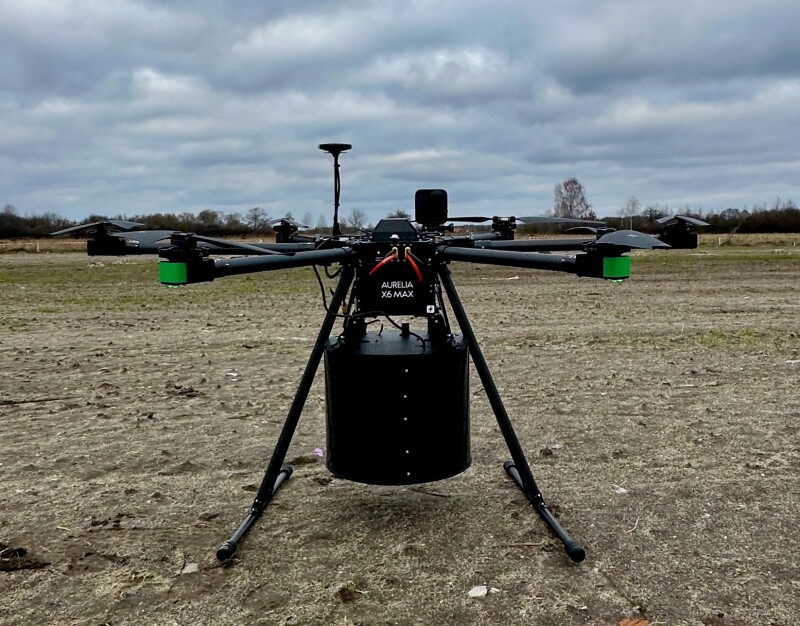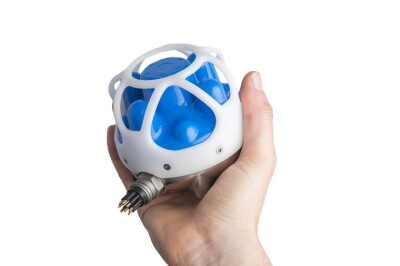Across many industries, artificial intelligence (AI) is making drone-based operations more accurate and efficient, and one of the most promising applications of AI lies in vehicle navigation.
One of the new innovators in this field is Bavovna. The company offers AI-powered navigation for aerial, surface, and subsurface vehicles operating in GPS-compromised environments. To be one of the leaders for AI-driven alternative navigation for Class II UAVs, Bavovna has introduced Autonomous Navigation, a SWAP, low-cost, modular solution for UV navigation in GNSS-denied environments. The company’s AI-driven inertial navigation unit is achieving unprecedented accuracy for Class II UAVs operating under aggressive EW or natural obstacles like scintillation conditions.
 "In the challenging arena of aerial vehicle operations, where GNSS-denied spaces and electronic warfare threats loom large, any alternative navigation system emerges as a game-changer for Aurelia Aerospace,” said Chris Preshaw, CEO of Aurelia Aerospace. “The integration of Bavovna's sophisticated modular hardware and SaaS AI into our UAV platforms has revolutionized our capability to navigate and overcome both intentional disruptions and environmental challenges to PNT systems. This AI-driven navigation ensures our operations are executed with unmatched precision and reliability."
"In the challenging arena of aerial vehicle operations, where GNSS-denied spaces and electronic warfare threats loom large, any alternative navigation system emerges as a game-changer for Aurelia Aerospace,” said Chris Preshaw, CEO of Aurelia Aerospace. “The integration of Bavovna's sophisticated modular hardware and SaaS AI into our UAV platforms has revolutionized our capability to navigate and overcome both intentional disruptions and environmental challenges to PNT systems. This AI-driven navigation ensures our operations are executed with unmatched precision and reliability."
To learn more, Commercial UAV News spoke with Bavovna CGO Max Prasolov. We discussed the company’s products and clients, the ways AI can benefit commercial drone applications, the concept of “inertial navigation,” and more.
Commercial UAV News: Tell us about Bavovna. What products and services do you offer? Who are your customers and clients?
Prasolov: Bavovna specializes in advanced navigation solutions, leveraging AI to enhance accuracy and reliability in environments where traditional GPS is compromised or unavailable. Our flagship product, an AI-enhanced inertial navigation system, is designed for unmanned vehicles operating in both aerial and non-aerial contexts. This system integrates sensor fusion and AI algorithms to provide precise navigation data, crucial for autonomous operations. Our clients range from defense contractors and governmental agencies seeking robust navigation solutions for UVs to commercial entities utilizing drones for logistics, surveillance, and environmental monitoring.
Also, we are UV platform agnostic and are currently integrated on eight UV platforms, including fixed wing, tilt wing, VTOLs, multi-copters, and FPVs for manufacturers from North America, the EMEA, and Ukraine. Bavovna reach a production scale of 1000 units/month in 2Q2024, 5000+ units/month by the end of Q3 2024, and 15,000 units/month by EOY 2024, at costs commensurate with various mission goals.
Commercial UAV News: How does your work impact the use of drones in commercial operations?
 Prasolov: Bavovna's technology directly addresses the limitations of GPS-reliant navigation, enabling drones to operate in diverse environments with enhanced precision and safety. For instance, in commercial logistics, our inertial navigation system allows drones to deliver packages in urban canyons or remote areas where GPS signals are weak or nonexistent, or lost because of solar activity/scintillation. This capability not only expands operational domains but also improves delivery times, enhances safety by reducing collision risks, and ultimately boosts return on investment through expanded service offerings and operational efficiency.
Prasolov: Bavovna's technology directly addresses the limitations of GPS-reliant navigation, enabling drones to operate in diverse environments with enhanced precision and safety. For instance, in commercial logistics, our inertial navigation system allows drones to deliver packages in urban canyons or remote areas where GPS signals are weak or nonexistent, or lost because of solar activity/scintillation. This capability not only expands operational domains but also improves delivery times, enhances safety by reducing collision risks, and ultimately boosts return on investment through expanded service offerings and operational efficiency.
Also, we are working on ways to protect UAVs from anti-drone attacks using a commercially available EW system. Delivery drone hijacking is a new crime and spreading as an anti-drone solution costs about $1,500. Soon, we believe every delivery UAV will have alternative navigation by default.
Commercial UAV News: Can you explain the concept of “inertial navigation” and how it works with drone flights?
Prasolov: Inertial navigation is a self-contained navigation technique that calculates a PNT - position, navigation, and timing for a moving object's position, orientation, and velocity without the need for external references. It utilizes motion, rotation, and other sensors (accelerometers, gyroscopes, magnetometers, baro, compass, airflow, etc.) to continuously track the movement from a known starting point, orientation, and velocity. Unlike GNSS, inertial navigation does not rely on external signals, making it invaluable in environments where such signals are unreliable or unavailable.
Commercial UAV News: How does AI impact navigation systems? What are the advantages?
 Prasolov: AI significantly amplifies the capabilities of our inertial navigation systems. By incorporating sensor fusion AI, Bavovna can process vast amounts of sensor data in real-time, distinguishing between sensor noise and actual vehicle movement with unprecedented accuracy less than 0,5% end point positioning error or just a couple dozen metres on the 30 miles complex trajectory. Combining with computer vision sensors for last mile guidance this capability enables drones to navigate complex environments with a level of precision comparable with GNSS and reliability unattainable with traditional systems. For drone operations, this means improved route optimization, enhanced obstacle avoidance, and the ability to operate in GPS-denied environments, directly contributing to safer and more efficient operations.
Prasolov: AI significantly amplifies the capabilities of our inertial navigation systems. By incorporating sensor fusion AI, Bavovna can process vast amounts of sensor data in real-time, distinguishing between sensor noise and actual vehicle movement with unprecedented accuracy less than 0,5% end point positioning error or just a couple dozen metres on the 30 miles complex trajectory. Combining with computer vision sensors for last mile guidance this capability enables drones to navigate complex environments with a level of precision comparable with GNSS and reliability unattainable with traditional systems. For drone operations, this means improved route optimization, enhanced obstacle avoidance, and the ability to operate in GPS-denied environments, directly contributing to safer and more efficient operations.
Commercial UAV News: What’s next for Bavovna? Do you have new products or services – or enhancements to existing offerings – in development?
Prasolov: Looking ahead, Bavovna is focused on further refining our inertial navigation systems with enhanced AI algorithms and sensor integration, aiming to set new industry standards for navigation precision and reliability. We are also expanding our product line to include navigation solutions tailored for maritime and subterranean applications, responding to the growing demand for robust navigation capabilities in all domains. Additionally, we are exploring partnerships with UAV manufacturers and service providers to integrate our technology directly into their platforms, thereby broadening our impact across the commercial and defense sectors.
















Comments